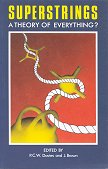Taking readers to the cutting edge of physics, mathematics, and computer science,
Julian Brown tells the dramatic story of the ground-breaking efforts to create
a fundamentally new kind of computer that would be astronomically more powerful than today’s machines.
In 1998, a team of researchers announced they had produced
the world’s first quantum computer in a cup of chloroform.
In fascinating, fully accessible detail, Brown explains the ideas
that led up to this accomplishment and explores the mind-stretching implications
of this leap into the bizarre world of quantum physics.
The Quest for the Quantum Computer is a riveting look
at what promises to be one of the most important scientific
and technological ideas of the twenty-first century.
Brown leads us on a fascinating tour of quantum computing, from the
background physics, up to the state of the art technology as it was in
2000. He explains lucidly, and in depth: in the first chapter alone we get
a description of the differences between superposition, entanglement, and
interference. He covers quantum algorithms, quantum communications, and
physical implementations. He leavens his explanations with little
vignettes of the scientists involved, but he concentrates on the physics
for the most part. Even in the last chapter, where he covers some of the
wilder and wackier ideas (from Penrose to Tipler) he is remarkably
even-handed.
This is a jolly good read, if by now a little out of date on the
implementation side. Time for a second edition, maybe?

